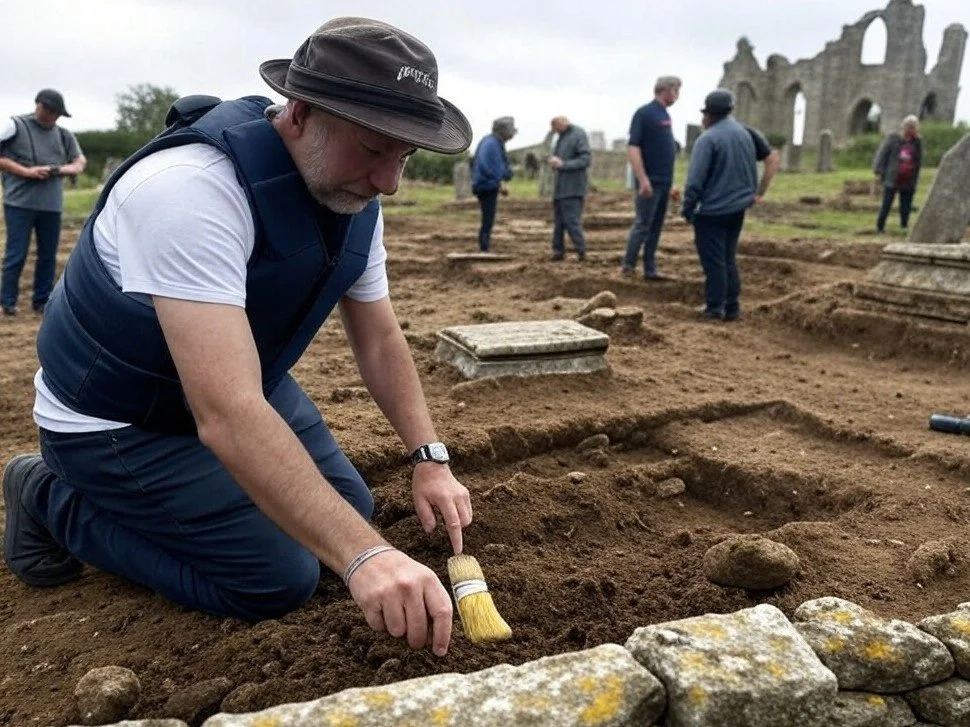The discovery of King Richard III’s remains in a Leicester parking lot in 2012 is one of the most remarkable archaeological finds of the 21st century. This unexpected discovery not only solved a centuries-old mystery but also reshaped our understanding of English history, offering new insights into the life and death of one of England’s most controversial monarchs.
The Historical Context
Richard III, the last Plantagenet king of England, ruled from 1483 until his death in 1485. His reign was marked by political turmoil and conflict, culminating in the Battle of Bosworth Field, where he was defeated by Henry Tudor (later Henry VII). Richard’s death marked the end of the Wars of the Roses and the beginning of the Tudor dynasty.
After the battle, Richard’s body was reportedly buried in the Greyfriars Church in Leicester. However, the exact location of his grave was lost over time, especially after the dissolution of the monasteries under Henry VIII in the 16th century. For centuries, Richard’s final resting place remained a mystery, fueling speculation and legend.
The Archaeological Search
The search for Richard III’s remains was initiated by the Richard III Society, a group dedicated to reassessing the king’s historical reputation. In 2012, they partnered with the University of Leicester to conduct an archaeological dig at a site believed to be the former location of Greyfriars Church.
The Excavation
Initial Findings: The excavation began in a parking lot in Leicester, where historical maps suggested the church might have been located. Within hours of digging, the team uncovered human remains that showed signs of severe trauma, consistent with historical accounts of Richard’s death in battle.
Identification: The skeleton exhibited several key characteristics that matched historical descriptions of Richard III. These included a curved spine (scoliosis), which aligned with contemporary accounts of the king’s physical appearance, and battle wounds that corresponded to the manner of his death.
DNA Analysis: To confirm the identity of the remains, scientists conducted DNA analysis. They compared the mitochondrial DNA from the skeleton with that of living descendants of Richard’s sister, Anne of York. The match provided strong evidence that the remains were indeed those of Richard III.
The Archaeological Process
The discovery of Richard III’s remains involved a meticulous and multidisciplinary approach, combining archaeology, forensic science, and historical research.
Excavation Techniques: The team used careful excavation techniques to preserve the integrity of the site and the remains. They documented each layer of soil and any associated artifacts, providing a comprehensive record of the burial context.
Forensic Analysis: Forensic experts examined the skeleton for signs of trauma and disease. The analysis revealed multiple injuries, including a fatal blow to the skull and other wounds consistent with a violent death in battle.
Historical Research: Historians reviewed contemporary accounts and documents to corroborate the findings. This included examining descriptions of Richard’s physical appearance, the circumstances of his death, and the location of his burial.
Reshaping Our Understanding of English History
The discovery of Richard III’s remains has had a profound impact on our understanding of English history, challenging long-held perceptions and providing new insights into the late medieval period.
Reevaluating Richard’s Legacy: Richard III has often been portrayed as a villain, particularly in Shakespeare’s play, which depicts him as a ruthless and deformed tyrant. The discovery of his remains and the subsequent analysis have prompted a reevaluation of his character and reign. While he remains a controversial figure, the evidence suggests a more nuanced understanding of his life and actions.
Insights into Medieval Warfare: The forensic analysis of Richard’s injuries provides valuable information about the nature of medieval combat. The wounds indicate the brutality of the Battle of Bosworth Field and the types of weapons used, enhancing our knowledge of 15th-century warfare.
Archaeological Significance: The discovery highlights the importance of interdisciplinary collaboration in archaeology. The combination of historical research, forensic science, and modern technology has set a new standard for archaeological investigations, demonstrating how such approaches can solve historical mysteries.
Public Engagement: The discovery captured the public’s imagination, sparking widespread interest in history and archaeology. The excavation and subsequent reburial of Richard III in Leicester Cathedral were accompanied by extensive media coverage and public events, bringing history to life for a global audience.
Conclusion
The discovery of King Richard III’s remains in a Leicester parking lot is a testament to the power of archaeology to uncover and illuminate the past. This remarkable find has reshaped our understanding of one of England’s most enigmatic monarchs, offering new perspectives on his life, death, and legacy. Through meticulous excavation, scientific analysis, and historical research, the story of Richard III continues to captivate and inform, reminding us of the enduring relevance of history in our modern world.







